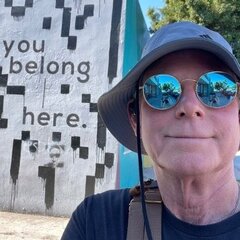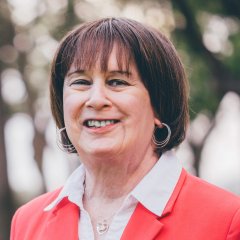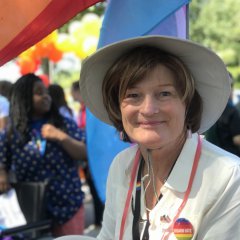-
Who's Online 8 Members, 0 Anonymous, 130 Guests (See full list)
- Timi
- Ivy
- SamC
- Lenneth
- Susie
- MaryEllen
- Ashley0616
- Vidanjali
-
Recently Browsing 0 members
- No registered users viewing this page.
-
Forum Statistics
-
Total Topics80.7k
-
Total Posts768.4k
-
-
Member Statistics
-
Total Members12,025
-
Most Online8,356
Newest Member
JamesyGreen
Joined -
-
Today's Birthdays
-
Alscully
(35 years old) -
floruisse
(40 years old) -
Jasmine25
(22 years old) -
Trev0rK
(26 years old)
-
-
Posts
-

By Timi · Posted
Jeans and a white sweater. And cute white sneakers. Delivering balloons to a bunch of restaurants supporting our LGBT Community Center fundraiser today! -

-
By missyjo · Posted
I've no desire to present androgynous..nothing wrong with it but I am a girl n wish to present as a girl. shrugs, if androgynous works fir others good. always happy someone finds a solution or happiness today black jeans black wedges..purple camisole under white n black polka dot blouse half open soft smile to all -

By MaeBe · Posted
I have read some of it, mostly in areas specifically targeted at the LGBTQ+ peoples. You also have to take into account what and who is behind the words, not just the words themselves. Together that creates context, right? Let's take some examples, under the Department of Health & Human Services section: "Radical actors inside and outside government are promoting harmful identity politics that replaces biological sex with subjective notions of “gender identity” and bases a person’s worth on his or her race, sex, or other identities. This destructive dogma, under the guise of “equity,” threatens American’s fundamental liberties as well as the health and well-being of children and adults alike." or "Families comprised of a married mother, father, and their children are the foundation of a well-ordered nation and healthy society. Unfortunately, family policies and programs under President Biden’s HHS are fraught with agenda items focusing on “LGBTQ+ equity,” subsidizing single-motherhood, disincentivizing work, and penalizing marriage. These policies should be repealed and replaced by policies that support the formation of stable, married, nuclear families." From a wording perspective, who doesn't want to protect the health and well-being of Americans or think that families aren't good for America? But let's take a look at the author, Roger Severino. He's well-quoted to be against LGBTQ+ anything, has standard christian nationalist views, supports conversion therapy, etc. So when he uses words like "threatens the health and well-being of children and adults alike" it's not about actual health, it's about enforcing cis-gendered ideology because he (and the rest of the Heritage Foundation) believe LGBTQ+ people and communities are harmful. Or when he invokes the family through the lens of, let's just say dog whistles including the "penalization of marriage" (how and where?!), he idealizes families involving marriage of a "biological male to a biological female" and associates LGBTQ+ family equity as something unhealthy. Who are the radical actors? Who is telling people to be trans, gay, or queer in general? No one. The idea that there can be any sort of equity between LGBTQ+ people and "normal" cis people is abhorrent to the author, so the loaded language of radical/destructive/guise/threaten are used. Families that he believes are "good" are stable/well-ordered/healthy, specifically married/nuclear ones. Start looking into intersectionality of oppression of non-privileged groups and how that affects the concept of the family and you will understand that these platitudes are thinly veiled wrappers for christian nationalist ideology. What's wrong with equity for queer families, to allow them full rights as parents, who are bringing up smart and able children? Or single mothers who are working three jobs to get food on plates? -

By Ashley0616 · Posted
Well yesterday didn't work like I wanted to. I met a guy and started talking and he was wanting to be in a relationship. I asked my kids on how they thought of me dating a man and they said gross and said no. I guess it's time to look for women. I think that is going to be harder. Oh well I guess. -

By Ashley0616 · Posted
I don't have anything in my dress pocket -

By Carolyn Marie · Posted
This topic reminds me of the lyrics to the Beatles song, "A Little Help From My Friends." "What do you see when you turn out the lights?" "I can't tell you but I know it's mine." Carolyn Marie -

By Abigail Genevieve · Posted
@Ivy have you read the actual document? Has anyone else out there read it? -

By Abigail Genevieve · Posted
I am reading the Project 2025 document https://www.project2025.org/policy/ This will take some time. I read the forward and I want to read it again later. I read some criticism of it outside here and I will be looking for it in the light of what has been posted here and there. Some of the criticism is bosh. @MaeBe have you read the actual document? -

-

-

By RaineOnYourParade · Posted
Old topic, but I gotta say my favorites are: "Stop hitting on minors" (doesn't work if you're holder tho) and "Sure as [squid] not you" -

By Carolyn Marie · Posted
Abigail, I think we will just leave the other posts where they are, and the discussion can start anew here. It is possible to do what you ask, but would disrupt the flow of the discussion in the other thread, and would require more work than it's worth. Carolyn Marie -

By Abigail Genevieve · Posted
I am in too good a mood to earn my certificate today. I am sure something will happen that will put me on the path to earning it. -

By Abigail Genevieve · Posted
It's likely most cis-women consider a fitting unnecessary "because they know what they wear" and get used to the wrong size. The instructions for what your size is are simple and why go to any further effort? You measure your bandsize and you measure your max and subtract the two to get the needed info for the cup size. Then you buy the same size for years until it hurts or something.
-
-
Upcoming Events
-


Recommended Posts
Create an account or sign in to comment
You need to be a member in order to leave a comment
Create an account
Sign up for a new account in our community. It's easy!
Register a new accountSign in
Already have an account? Sign in here.
Sign In Now